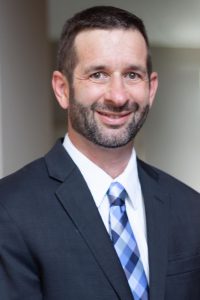2 Comments

As we approach September, the next NIH Loan Repayment Program (LRP) application cycle is upon us. The Extramural LRP has six subcategories that aim to recruit and retain highly qualified biomedical and behavioral scientists to engage in NIH-mission relevant research.
The next application cycle opens September 1, 2022 and closes November 17, 2022. For those interested in applying, we are also hosting several activities designed to help you prepare a successful application:
- NIH Loan Repayment Programs: Supporting the Next Generation of Researchers: August 25, 2022
- Twitter Chat: September 8, 2022
- LRP Technical Assistance Webinar: October 3, 2022 (meeting coordinates TBD)
- Ask Me Anything Session: November 3, 2022 (meeting coordinates TBD)
Each new LRP recipient can receive up to $100,000 to repay qualified educational debt in exchange for a two-year commitment to research. NIH Institutes and Centers have increased their collective funding commitment to the LRPs with more than $90 million in awards in each of the last two program cycles (Table 1). And for those unsure if they should apply, consider that around half of all new LRP applications submitted last FY were funded, which could also be competitively renewed (for a one or two-year period) until all educational debt is repaid.
Table 1: NIH LRP Applications, Awards, and Funding from FY 2013-2022
| Fiscal Year | Applications | Awards | Total Funding ($) | Success Rate |
| 2013 | 2,666 | 1,328 | 66,747,267 | 49.8% |
| 2014 | 2,634 | 1,356 | 68,954,316 | 51.5% |
| 2015 | 2,732 | 1,347 | 69,034,959 | 49.3% |
| 2016 | 2,579 | 1,325 | 68,332,852 | 51.4% |
| 2017 | 2,597 | 1,282 | 68,185,910 | 49.4% |
| 2018 | 2,710 | 1,269 | 71,569,901 | 46.8% |
| 2019 | 2,518 | 1,322 | 72,308,731 | 52.5% |
| 2020 | 2,451 | 1,262 | 87,020,128 | 51.5% |
| 2021 | 2,253 | 1,301 | 91,518,202 | 57.7% |
| 2022 | 2,307 | 1,359 | 93,528,128 | 58.9% |
During the FY 2022 cycle, 171 scientists applied for the inaugural Research in Emerging Areas Critical to Human Health (REACH) LRP. We made 97 REACH awards totaling $7.2 million. This new subcategory gave 19 different NIH Institutes and Centers the autonomy to fund emerging research areas and target researchers who wouldn’t have qualified under the existing LRP subcategories.
Two of the other subcategories, Clinical Research and Pediatric Research, are celebrating their 20th anniversaries this year. In FY 2002, NIH made approximately $26.3 million available across NIH Institutes and Centers to fund the first cohorts. Since then, NIH has repaid over $1.1 billion in cumulative student loan debt through both subcategories.
Before closing, I am also proud to share that Matthew Lockhart, M.B.A., was named the new Director of the Division of Loan Repayment within the NIH Office of Extramural Research earlier this summer. In this role, Matt will provide leadership, coordination, and oversight for the NIH LRPs. He started his NIH career in this office as a student intern, served as its Acting Director, and has seen the office evolve throughout his tenure. Without a doubt, Matt brings a wealth of experience in operating nationwide loan repayment programs and developing, implementing, and handling complicated and high visibility projects.
In his own words, Matt remarked, “I look forward to continuing the rich legacy of facilitating research careers for early-stage scientists. Repaying student debt has proven to be a weighty struggle for many Americans. Our LRPs can set early-stage scientists free from this burden, thus allowing them to focus on building their research careers.”
More is to come over the next several months, including the roll out of new portals where awardees and supervisors can access their LRP award information via their eRA Commons account. You can sign up on our listserv to learn more about these activities and other upcoming LRP events when they are announced.



Good day:
I’m a tenured faculty person at a non-profit university where we are paid across 12 months for 9-months of work obligations in Fall and Spring semesters, with and have 25% of my formal workload in Fall and Spring allocated to research, with no contractual work obligations in summer. I nevertheless perform an average of 20 or more hours of week of research each week, including throughout the summer weeks. Does this qualify for the LRP guidelines?
Hello! Based on the information provided, it looks like you are eligible as long as you average 20 hours/week in each quarter during the LRP contract. Please send any further questions via email to [email protected]. https://www.lrp.nih.gov/contact-engage